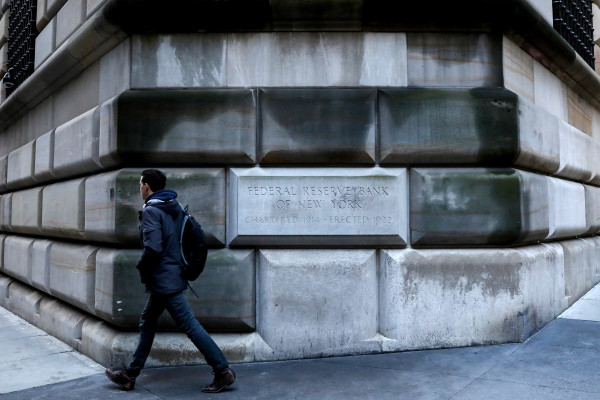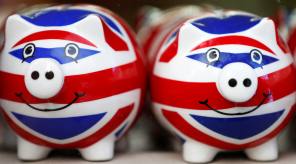

Just one more cut has been priced for this year and, tellingly, only one voter opted for a larger 0.5 per cent cut this time, with two voting in favour of no cut.
The balance is clearly more hawkish, owing to the fact that financial conditions are still supportive of the economic outlook and despite the rate cut, there appears nothing of any urgency happening in the economy or the rates markets.
The yield curve was slightly flatter on the news, with Fed chairman Jerome Powell making it clear this cut was necessary in light of slightly softer economic data and to mitigate a possible economic downturn: “In terms of firepower, I think the general principal is it can be a mistake to hold on to your firepower until a downturn gains momentum.”

Significantly, he also made it clear he was not in favour of continual cuts and entering into the negative rates environment.
In fact, quantitative easing would likely be the solution before this situation was called for.
As Mr Powell alluded to in his speech, monetary policy cannot do all the heavy lifting.
Key points
- The Fed committee is slightly less dovish
- Demand for debt is still there
- Pressure might be applied to the Fed chairman for monetary stimulus
“Over the long run, we can’t really affect the growth rate of the US; the potential growth rate of the US is not a function of monetary policy. It is a function of other things.”
From extensive studies we know QE is becoming less and less effective in accelerating aggregate demand – an important driver of growth – so could fiscal stimulus be the answer?
Credit stress
The implications for bond markets, from a relative perspective, is that despite easing and unappealing real yields, demand for debt has not gone away.
Forced into a corner, many money market managers and institutional investors have a forced hand at what they can buy.
This is driving yields across the risk spectrum down.
Credit rarely moves sideways and while central banks ease, companies battle with the onset of greater tariffs and more complex supply chains, with this margin squeeze bound to be passed onto the consumer at some stage.
Credit may therefore become more stressed and we may see default rates pick up; high-yield and lower-rated investment grade bonds could be first in line for significant widening.
The overnight rate (repo rate) spike earlier in September of levels close to 10 per cent sparked some concerns around a US dollar shortage.
The demand from smaller banks, and in turn the larger banks’ demand for borrowing from the Fed, forced the overnight rate into double digits.
We have yet to find a watertight and highly plausible reason for this aside of the supply-demand dynamic, but needless to say, it is of some concern for liquidity levels in the market and something we will continue to monitor.
Currency is relative
The US dollar paired some modest gains after the rate cut, although this may well be temporary and more a function of general risk-off sentiment and the existence of tariffs.
This cut also comes at a time when oil has undergone the worst supply shortage shock ever, surpassing that of various episodes in the past.
The Japanese yen and Swiss franc are still acting as risk-off currencies, gaining against the US dollar over the short term.
Certainly, the outlook for these currencies tends to be determined by the general global economic sentiment.
With many central banks easing policy now, currency is a relative call and the geopolitical situations are being played out here more than ever.
We see this in the FX volatility measure, the MOVE index (option pricing for rates and currency), now back in the 80s from the low 40s in May.
However, the VIX – another measure of volatility (equity) – is still running fairly low after some moves in August, from lows of 12 in July to highs of almost 25 and now back to around 14.
With rising FX volatility we are beginning to see opportunities in local currency once again, while keeping a foot firmly in the risk-off camp of Japanese yen, US dollar and euro.
Perhaps predictably, US President Donald Trump commented negatively at the lack of ‘guts’ coming from the Fed in a semi-aggressive tweet, saying: “Jay Powell and the Federal Reserve Fail Again. No ‘guts’, no sense, no vision! A terrible communicator!”
From this we anticipate the level of political pressure to be maintained in the run-up to the 2020 elections.
With dual control lost it is almost impossible for Mr Trump to pass any fiscal bill through before the elections commence, therefore the rates market is the only ‘lever’ left to ensure stimulus is maintained as the election nears.
The last thing he wants is a recession.
Markets remain volatile
The market and investors are left seeing the US as somewhat of an outlier in terms of rates (and as a knock-on to the US dollar), therefore applying pressure to Mr Powell to ease policy more aggressively, in order to be more in line with the rest of the world, is one way of providing monetary stimulus.
An all-in 0.5 per cent cut (so far) with another 0.2 per cent through end 2019, plus a further 0.45 per cent priced in for 2020, could deliver this.
This would mean Mr Powell’s job is ‘safe’, at least in the short term. It does lead us to believe that volatility and this type of pressure will continue.
When directly questioned by the Wall Street Journal on the security of Mr Powell’s tenure as Fed chair, the US president responded with, “Yeah, it’s safe. I mean sure. Why not?”
In this context, we expect volatility in markets will persist this year and into 2020.
Jim Leaviss is manager of the M&G Global Macro Bond fund



